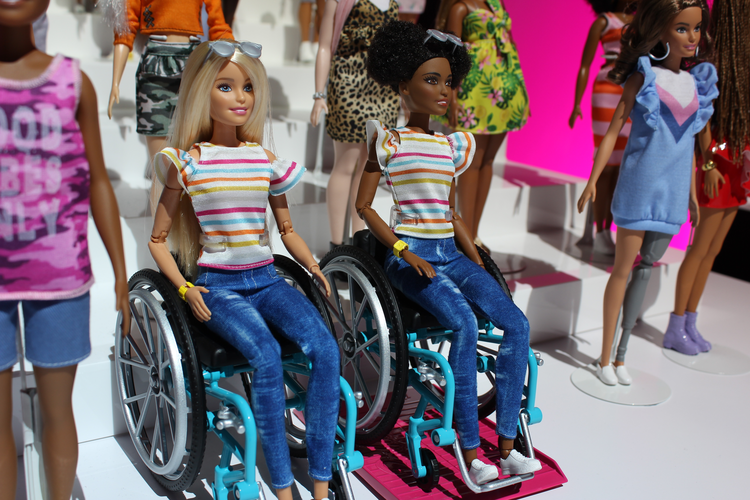Lessons from Leaders: Mattel’s Ruth Handler
Share:
Welcome to Thomas Insights — every day, we publish the latest news and analysis to keep our readers up to date on what’s happening in industry. Sign up here to get the day’s top stories delivered straight to your inbox.

We are living in a Barbie world in the summer of 2023. The Greta Gerwig-directed existential comedy Barbie, starring Margot Robbie as Barbie and Ryan Gosling as Ken, hit theaters across the country on July 21, promoted by a massive marketing campaign with a wide range of major brands. Airbnb offered free stays at a mansion designed as Barbie’s Malibu Dreamhouse; well-known beauty brands, such as Chi and OPI, released Barbie collaborations of their products; and if you searched the word “Barbie” on Google on the day of the film’s release, the website’s transformed into a starry, pink design.
But how did Mattel’s Barbie doll first come to be, and what lessons can manufacturers and entrepreneurs across industry learn from its founder?
Barbie History
The Barbie doll first went on sale for $3 in 1959 and quickly became an icon. Measuring 11.5 inches and donning fashionable clothes and high heels, this was the first adult-looking doll ever produced in the United States — and an instant hit with young girls. Toy manufacturer Mattel sold 351,000 dolls in the first year of release and struggled to keep up with customer demand.
The Barbie franchise quickly expanded to include additional family members, accessories, clothes, fan clubs, and new iterations of the original doll. In 1965, a Barbie with bendable legs and eyes that opened and shut was released. Two years later, Mattel introduced the Twist 'N Turn Barbie, which had a movable body that twisted at the waist. By 2002, more than one billion Barbie dolls had been sold around the world.
While the popularity of Barbie dolls has somewhat diminished among the youth of today, her iconic status remains. A vintage first-release Barbie doll in good condition can still sell for as much as $27,000.
The success of the Barbie doll can be attributed to the creativity and drive of Mattel’s cofounder Ruth Handler.
Who Was Ruth Handler?
Ruth Marianna Mosko was born in 1916 in Denver, Colorado, as the youngest of ten children. She married her high school boyfriend, Elliot Handler, in 1938, and encouraged him to found Mattel in 1945. The pair started out selling household items such as plastic picture frames, but Handler quickly progressed to designing dollhouse furniture with leftover plastic. It wasn’t long before the company focussed its efforts exclusively on designing toys.
The Barbie doll was inspired by and named after the Handlers’ daughter Barbara, while the Ken doll, which was released two years after Barbie, was named after their son. Ruth Handler had observed how Barbara enjoyed playing with adult paper dolls and embarked on a mission to design a toy that would cater to her daughter’s interests and imagination.
Whether you love or loathe Barbie, there’s no question that Handler created one of the world’s most popular toys and ultimately led Mattel to huge success. She was named Woman of the Year in Business by the Los Angeles Times, inducted into the Toy Industry Hall of Fame by the Toy Manufacturers of America, and was the first Woman of Distinction of the United Jewish Appeal.
Here are five lessons from Handler on developing a best-selling product.

Sean P. Aune / Shutterstock.com
5 Lessons on Developing a Best-selling Product from Ruth Handler
1. Find a Gap in the Market
It’s alleged that Handler’s interest in designing a new kind of doll for girls was driven, in part, by a family trip to Europe in 1956 when she spotted a doll designed for children that resembled an adult woman. Back in the 1950s, girls’ toys often consisted of baby dolls or characters that fulfilled the traditional women’s role of mom or housewife.
The Barbie doll represented a marked shift from this — it was different, exciting, and encouraged girls to embrace their autonomy.
“My whole philosophy of Barbie was that through the doll, the little girl could be anything she wanted to be,” said Handler. “Barbie always represented the fact that a woman has choices.”
More recently, Barbie dolls have been critiqued for promoting an unrealistic body image and unattainable beauty standards to young girls, as well as reinforcing outdated and constricting gender stereotypes.
In response to the growing skepticism surrounding the Barbie brand, Mattel announced three new body types for its Barbie doll in 2016, which were each made available in a range of skin tones, eye colors, and hairstyles. The company also pivoted its marketing strategy to focus more heavily on Barbie’s career ambitions, positioning the dolls as astronauts, doctors, and chefs.
2. Tell a Story
Storytelling is a fundamental part of building brand awareness, attracting and retaining customers, and selling your product. Handler was well aware of this when she created a detailed back-story for her very first Barbie doll. The doll was named Barbie Millicent Roberts, she came from Willow, Wisconsin, and she was a teenage fashion model.
Over the years, Barbie’s style, looks, and career have evolved and diversified, but there’s an inspiring and compelling story behind each doll.
3. Get Your Hands Dirty
"Even now, at 77, I can say that whatever has driven me for all these years is driving me still, even if at a slower pace. There's still a lot of fight in me, and perhaps the fight's the thing," said Ruth Handler.
Delegation is an important part of leadership, but to realize your visions and goals you need to roll up your sleeves, do some of the groundwork, and never give up the fight.
“[Ruth] was very hands-on. She was on the floor doing quality control,” said Robin Gerber, author of Barbie and Ruth.
4. Employ Innovative Marketing Techniques
You don’t stand a chance of developing a best-selling product if you can’t market it creatively to your target audience.
In 1955, Handler completely revolutionized product marketing when she had the idea of promoting a Mattel plastic machine gun directly to the company’s end-user: children. The toy was first advertised on the Mickey Mouse Club, a TV show seen by thousands of children who subsequently asked their parents to buy them the product. Handler paid $500,000 to become the Mickey Mouse Club’s exclusive sponsor and was the first person to successfully market a product directly to children.
Today, this particular technique is tried and tested, but there will always be new ways to inject creativity into your marketing strategy.
5. Draw on Your Personal Experiences
Barbie and Ken dolls are evidence of Handler’s ability to be inspired and motivated by her personal experiences. But this talent extends much beyond the toys she developed at Mattel.
Handler was diagnosed with breast cancer in 1970 and subsequently underwent a mastectomy. After returning to work, she was unhappy with her prosthetic breast and embarked on a mission to develop affordable, comfortable prosthetics that fit a range of bra sizes.
A new company, Nearly Me, was born. The prosthetics launched across high-end department stores in 1976 and subsequently supported thousands of women in the United States. Speaking of Nearly Me, Handler said, “when I conceived Barbie, I believed it was important to a little girl’s self-esteem to play with a doll that has breasts. Now I find it even more important to return that self-esteem to women who have lost theirs.”
How to Lead Like Ruth Handler
If you’re struggling to get a new product off the ground, ask yourself the following questions:
- What makes my product unique?
- Have I established the story behind my product?
- What more could I be doing to advance the development of this product?
- Who is my target customer, and how can I best grab their attention?
- How can my experiences to date inspire and motivate me to achieve my goals?
Get More Lessons from Leaders:
- Amazon’s Jeff Bezos
- Walt Disney Company’s Walt Disney
- Apple’s Steve Jobs
- Tesla’s Elon Musk
- IBM’s Ginni Rometty
- Facebook’s Sheryl Sandberg
- SpaceX’s Gwynne Shotwell
- Lego’s Jørgen Vig Knudstorp
- Walmart’s Sam Walton
- YouTube’s Susan Wojcicki







